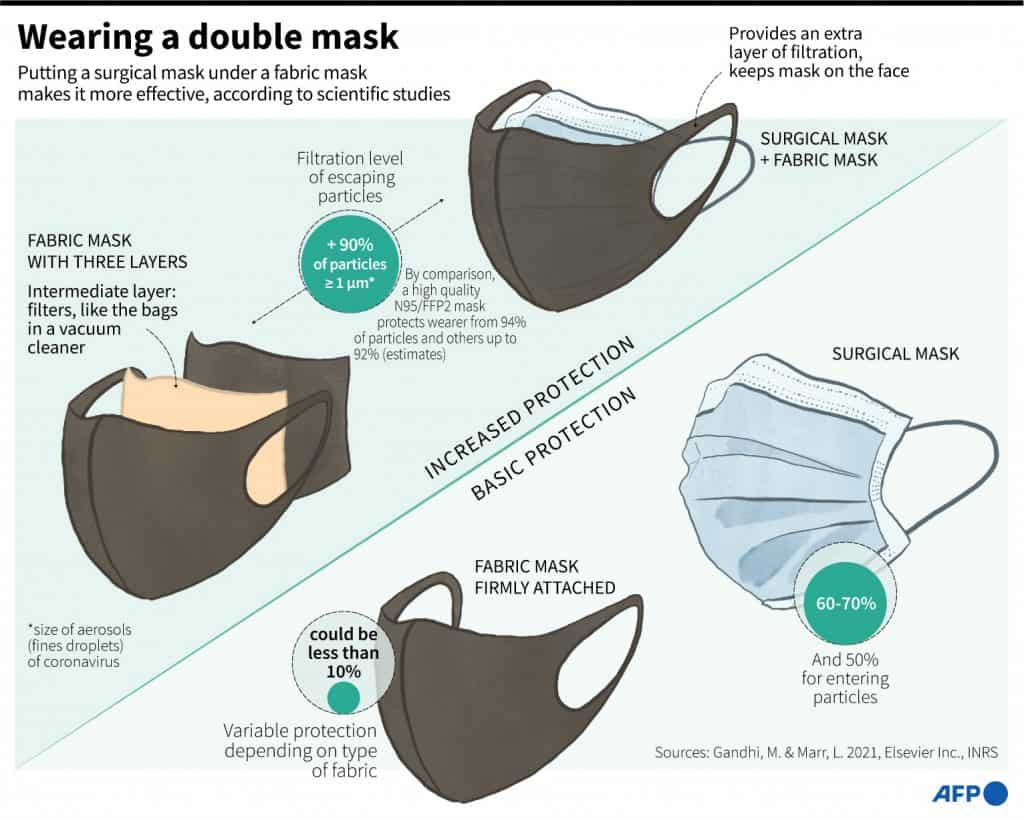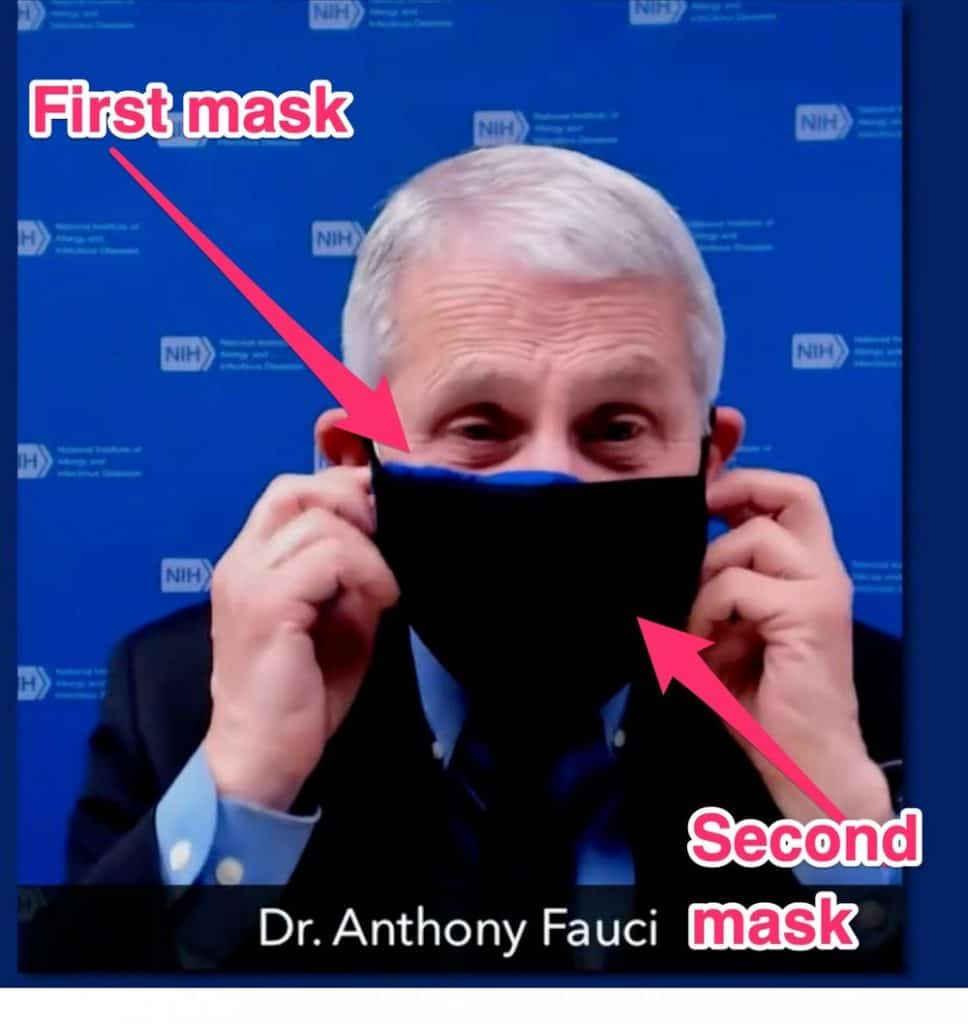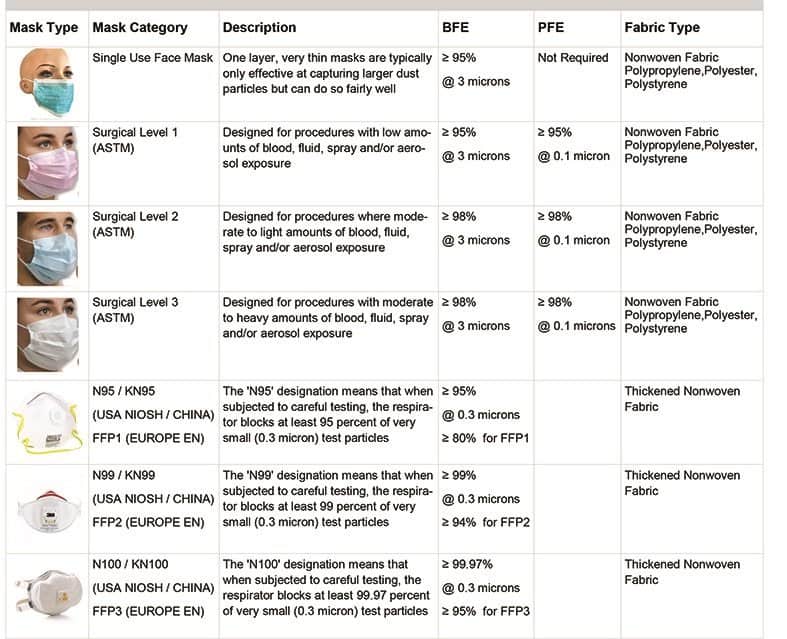Recent researches suggest that the coronavirus may survive on airborne aerosols for few hours, although it can also be spread through larger respiratory droplets emitted through a cough or a sneeze. Also, with the new coronavirus mutation, the Centers for Disease Control Prevention (CDC) now recommends using cloth face coverings over the mask you’re using to assist slow the spread of the coronavirus. There’s a possibility that there’ll be a shortage of surgical masks in hospitals during the Covid19 pandemic.
But what material offers the foremost protection?
While medical-grade masks are held for healthcare workers, we wish to raise awareness and investigate the protection levels of cloth masks as an alternate for public use.
Double masking has become a trend, but until now there hasn’t been much evidence if it works.
- A new CDC study suggests popping a cloth mask over a surgical one can improve protection by about 50%.
- If both are wearing double masks — exposure to viral particles is cut to 96%.
There are many other low-tech strategies that may improve the performance of your mask, too. Wearing a tight-fitting surgical mask, or doubling of masks, can significantly reduce COVID-19 transmission and slow the spread of the latest, more contagious strains, in line with this CDC.
Researchers found that if two people are both wearing surgical masks that are knotted and tucked flush to the face — or if both are wearing a cloth mask over a surgical mask — exposure to viral particles is cut by over 95%. Wearing a cloth mask over a surgical mask increased protection for the person wearing the masks, blocking 83% of small particles.

COVID-19 deaths within the U.S. jumped in November and, though they’re declining, are still high. Officials have warned that the U.K.-based variant could ultimately become the dominant strain within the U.S. by March.
These findings emerge among growing concerns about three new, highly contagious COVID-19 variants first identified within the U.K., Republic of South Africa, and Brazil. All 3 have all made their way across U.S. borders.
To ensure proper mask-wearing, the CDC recommendations include:
- Choosing a mask that has 2 or more layers of washable, breathable fabric.
- Putting the mask over your nose and mouth by securing it under your chin.
- Knotting the ear loops of a surgical mask, where they attach to the mask, and so tucking in and flattening extra material near the face (knotted and tucked masks).
- Fitting the mask snugly against sides of your face, and slipping the loops over your ears, or tying the strings behind your head.
- If you’ve got to repeatedly adjust your mask, it doesn’t fit properly, and you may just find a special mask type or brand.
- Wearing your mask under your scarf, ski mask, or balaclava in cool weather.
- Keeping a spare mask to exchange one that becomes wet.
- Storing wet reusable masks in a bag until they’ll be washed.
The key finding from his study, out Wednesday, was that if everyone wore a mask that fits snugly (as many cloth masks do), and filtered the air shaft (the way that good surgical masks are designed to), we’d be doing excellent at controlling COVID-19 transmission.
If everyone was double-masking, that might reduce COVID-19 exposure by 96.4%, the study found.
Dr. Anthony Fauci demonstrated his double-masking technique for members of the New York Press Club on January 29, 2020.

Surgical masks are good filters, but cloth ones do fit better.
Double masking this way may be a strategy that the engineer and airborne virus expert Linsey Marr from Virginia Tech proposed during a scientific paper published in December.
While surgical masks don’t always fit great, they need some excellent virus-trappers inside, she said: Often, they’re outfitted with a barrier to trap infectious particles, and they are also built from nonwoven polypropylene layers, which make them highly efficient, breathable filters. But they do not usually conform to the face likewise as a cloth mask. “I quite connected the dots,” Marr said of her double-masking idea.
“You can have the filtration of the surgical mask, and you’ll get an improved fit by putting a cloth mask on top of it.”
Coronavirus: mask, face shield, FFP2, N95, KN95 — which one to use?
If you’re only wearing one mask, experts say the foremost effective mask that stands on its own may be a protective N95 respirator, often noted as just an N95 mask.
“The gold standard for effective particle filtration is the N95 masks used for medical purposes within the US while certified KN95 masks may additionally filtrate 95 percent of particles,” says Prickett.
With multiple layers of cloth, also as an extra-tight fit around the face and neck, these masks defend well against the airborne particles and droplets that you just inhale.
High-speed cameras capture how different types of face masks work in prevention from Covid-19:
Since the onset of the coronavirus pandemic, many countries within the world have introduced mask mandates publicly spaces, on local transport, and in stores. Everyone must wear some kind of mask when shopping, entering public buildings and offices and riding in trains, buses, or cabs.
Still, infection rates rise despite tighter shutdowns. This has likely been triggered by virus variants. within the future, masks must be FFP2 masks — called KN95, N95, or P2 in other parts of the globe.

Simple face mask
This is a bit of fabric that completely covers the mouth and nose. Even a bandanna or scarf would qualify. After you exhale, it inhibits the flow of air and so the gap that germs can travel. And this already significantly reduces the danger of infection for others.
The purpose of such masks isn’t to guard the people wearing them from infection: They protect the people everyone else from the wearers’ germs. Because the transmission is often caused by asymptomatic people, everyone seems to be a possible virus carrier.

The logic behind the mask requirement is, therefore: if everyone complies, the general risk of infection in society will fall.
Cloth masks should be changed frequently and washed in hot water to stop viruses from surviving.
Surgical masks
Such medical face masks are the professional equivalent of the fabric mask. Surgical masks contain thin disposable tissue and fleece and are utilized by doctors and assistants primarily to prevent their patients on operating tables from being infected with germs and pathogens. If the wearer of the mask coughs or sneezes, for instance, most of the droplets from the mouth and throat get caught within the mask.

This only works if the mask is changed regularly and disposed of hygienically and safely. In surgery, doctors must change their masks a minimum of every two hours. If a mask of this kind is worn repeatedly, it quickly loses its effectiveness.
During the pandemic, higher-quality masks with better filtration became the quality practice everywhere within the health profession.
How much protection does the mask provide?
Although the virus usually enters the body through the mouth or eyes, the hands play a crucial role in infections.
If you choose to wear a mask, you ought to probably also choose protective goggles. The surgical masks, albeit less effective to keep the viruses out, merely function as a continuing reminder to not touch your nose together with your hands when it itches. Neither must you rub your eyes.
FFP masks offer better protection for coronavirus mutation
In addition to surgical masks, which look more like multilayer disposable kitchen towels, there also are half-masks with a true filter effect. These are more familiar to those that add dusty environments or with aerosols. they’re available either as disposable masks, usually fabricated from strong pressed cellulose with a filter element and an exhalation valve or as plastic masks during which an appropriate filter is then inserted.
Only a FFP 3-grade mask will separate out enzymes and viruses. But this mask includes a valve – it’ll not protect others.
In the EU, these varieties of masks are divided into three FFP protection classes (filtering facepiece).
FFP1
Although masks of protection level FFP1 are still better than surgical masks, they are doing not offer the required protection against viruses. they’re intended for carpenters, as an example, who work band saws with vacuum-extraction systems. Builders may wear them to catch the coarser dust that vacuum cleaners are unable to. Bricklayers can put them on before mixing cement with trowels, kicking up some dust.
FFP2/N95/KN95
FFP2 masks (equivalent to other international standards called N95, KN95, and P2 masks) are getting more and more prevalent for elder-care and nursing homes. they supply a particular level of protection against viruses for the wearer, but mustn’t be used when in reality with highly infectious patients.

Given the temporary shortage of hygiene materials during the primary coronavirus wave in 2020, Germany’s Robert Koch Institute announced at the time that medical staff could wear FFP2 masks instead of the quality FFP3 masks in infectious situations if FFP3s weren’t available. Now there’s not a shortage of high-quality masks for such critical workers.
FFP3/N99/EN149/P3
Only FFP3 masks (roughly akin to international standards like N99, EN149, and P3) effectively protect the wearer from droplet aerosols, protein molecules, viruses, bacteria, fungi, and spores, and even from highly dangerous dusts like asbestos fibers. Unlike simple surgical masks, such high-quality filter masks can protect the wearer — including from a highly infectious pathogen like measles or tuberculosis.

Effective but not suitable for just everybody: Military gas mask and complete body protection.
If a mask is required — it must be the proper one!
Protection only works if many other protective measures are taken at the identical time: Strict hygiene when putting on a mask, protective goggles, gloves, and plastic aprons, proper disposal of possibly contaminated disposable items, and regular handwashing. additionally, the environment should be systematically disinfected.
These masks — along with all other protective clothing — are therefore employed in quarantine stations, for instance, where patients who are already infected are cared for.
What is the advantage of double-masking?
Wearing one mask on top of another is brought up as double-masking. Usually, you initially placed on a surgical, or FFP2, mask then a tight-fitting cloth mask on top of that. it’s important that the fabric mask fits so well that it’s airtight at the perimeters. the concept behind this: to stop air from flowing in or out past the mask.
The U.S. Food and Drug Administration (CDC) has conducted tests with double-masking and concluded that it can reduce the chance of infection by another 95 percent compared to a straightforward mask especially during these coronavirus mutation times. However, it only works if used consistently. Also, wearing a tight-fitting double mask over a protracted period of your time is significantly more uncomfortable than simply wearing one mask.
Problems with obligatory use of FFP2 masks
A legal requirement to wear FFP2 masks in supermarkets or transport could cause all types of problems, both in implementation and control.
Though it’s clear that FFP2 masks provide better protection than surgical or cloth masks, they only do so if they’re used correctly. All masks of that sort are disposable. whether or not it’s possible to sterilize them in an oven at 80 degrees Celsius (176 F), they’ll only be reused a few times.
Most people will probably not buy a replacement mask on every occasion they travel train or bus or buy groceries — especially because the already-high prices for quality masks are likely to rise as mask requirements are increased and market shortages result.
It seems more likely that several people will then buy just one or some masks to fits the formal legal obligation. they might then wear these for weeks or months — even without sterilizing them, especially since this is often impossible to manage. therein case, it would prove more hygienic to wear cloth masks that are regularly washed.
Other approaches for better masks
In addition to the three certified FFP mask types, there are other concepts for masks that have an antiviral effect. However, these wouldn’t meet formal regulatory requirements if FFP2 masks becomes obligatory publically spaces. whether or not they were found to be effective, they’d lack necessary certification.
Best protection: Remember to clean your hands!
All masks and goggles are of little use if the foremost important hygienic principles are neglected. for instance, if you come home after an extended bus or train ride, where you touched handrails and handles, come out the mask and scratch your nose, there was no point in wearing the mask.
If you have got been typing on your laptop keyboard all morning at the office so head to lunch without washing your hands first, you’re taking a substantial risk. Then, wearing a mask at the pc workstation would are of little use either.

